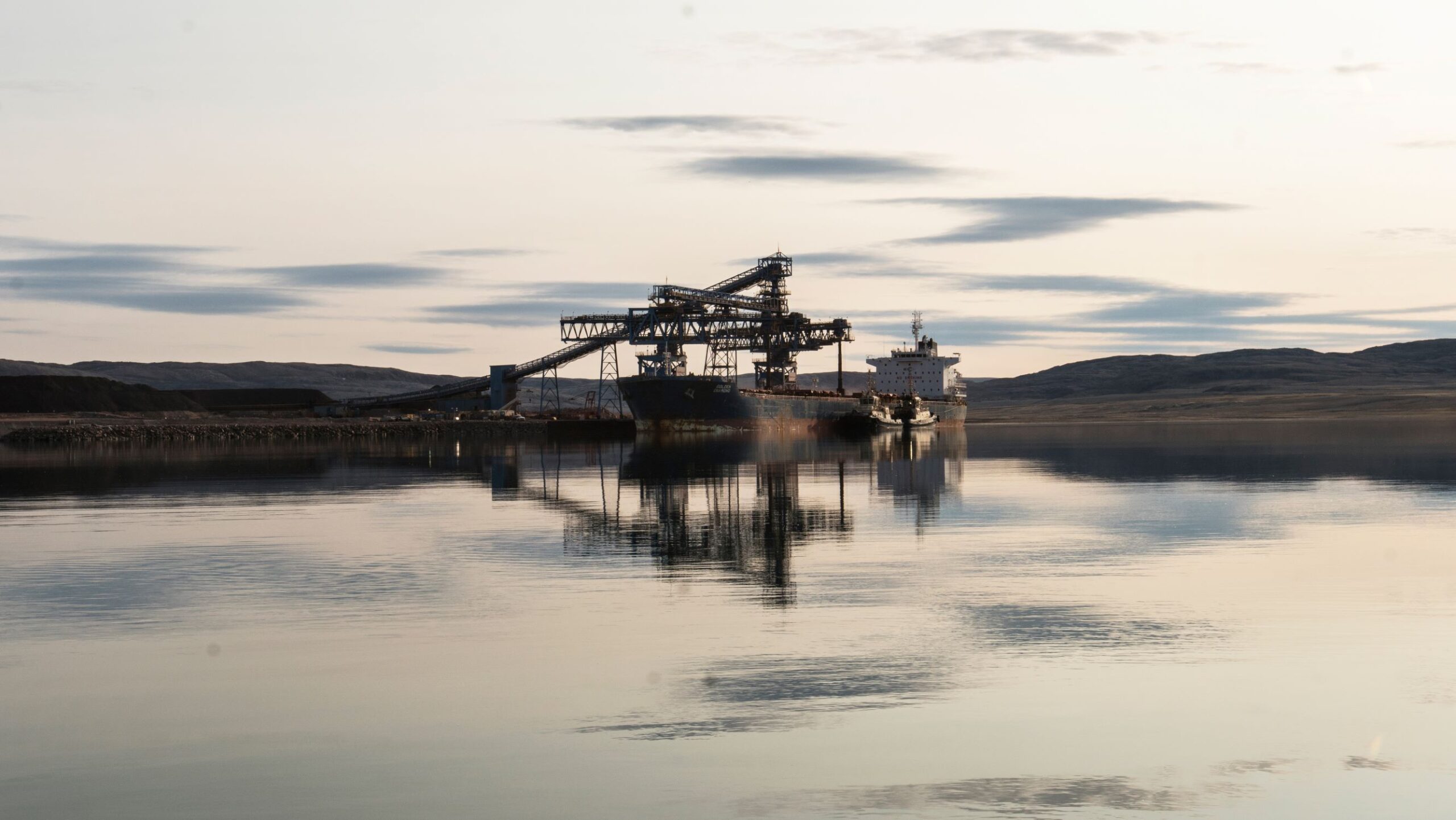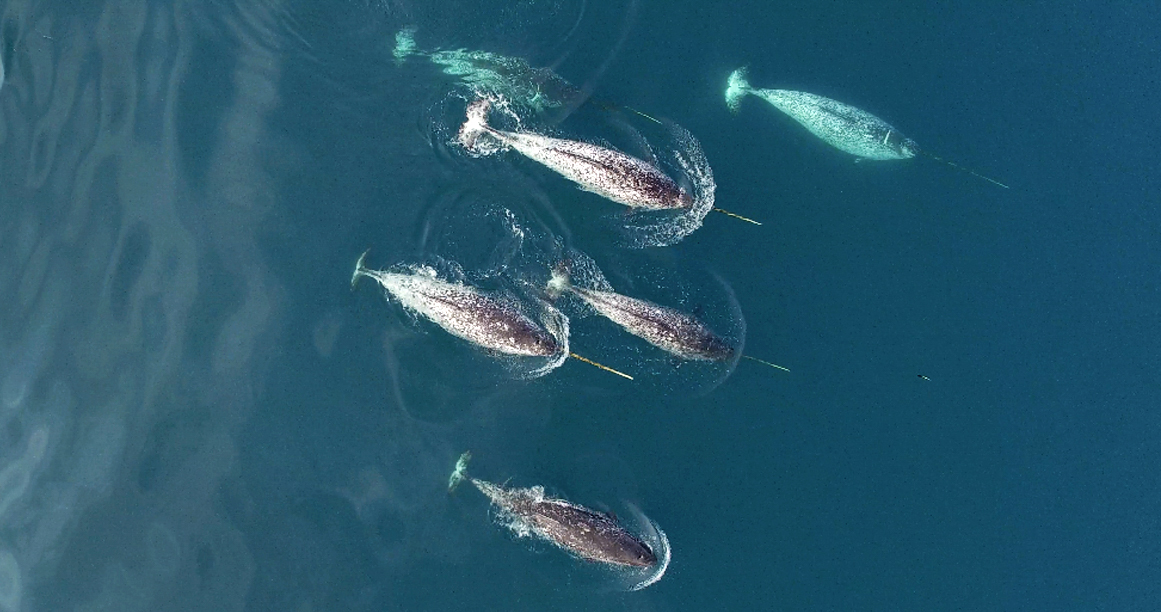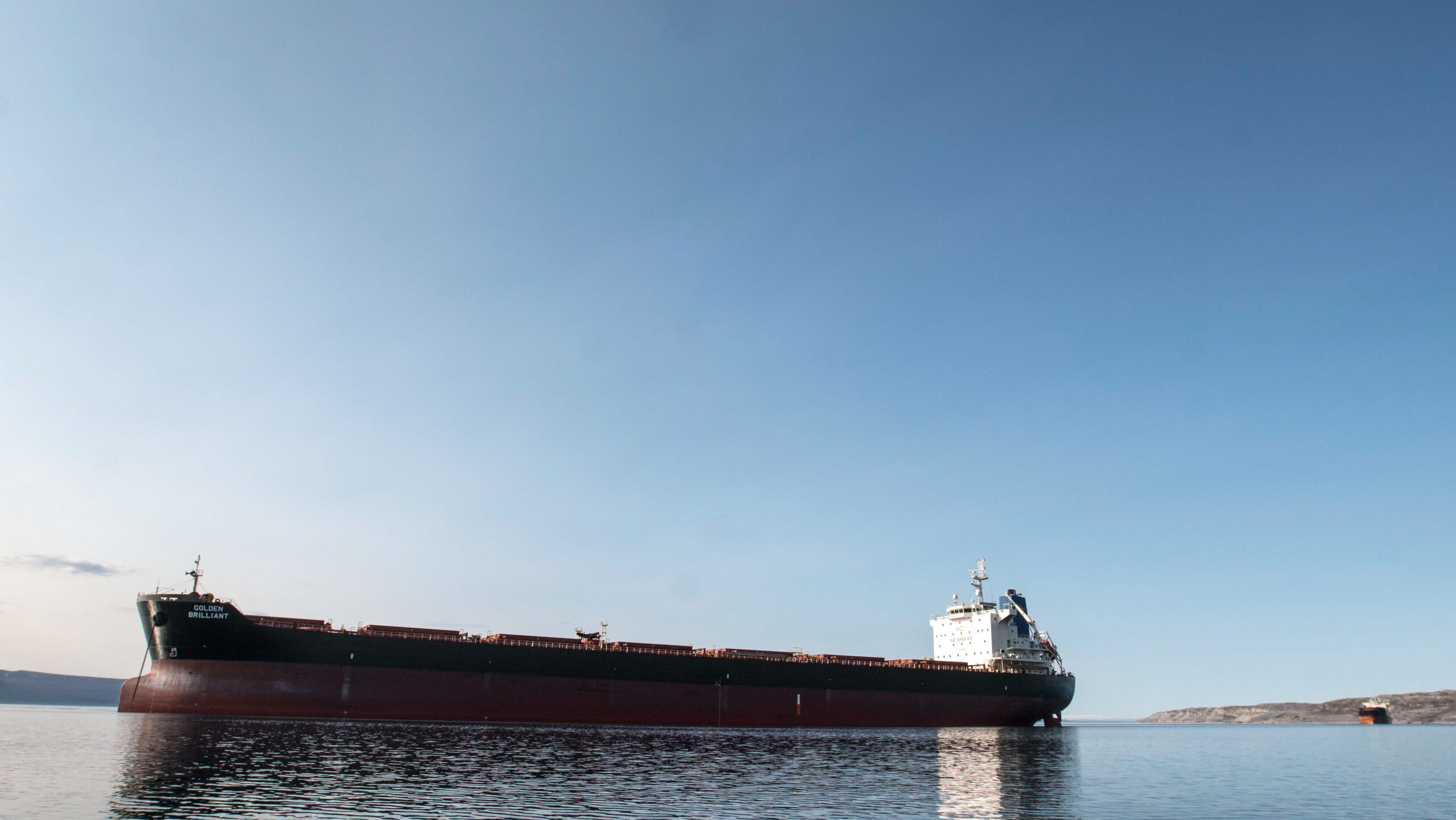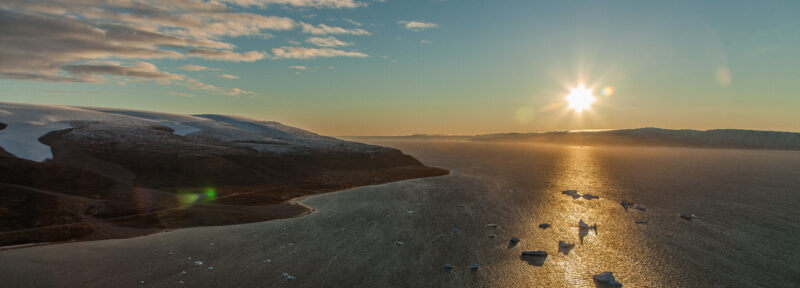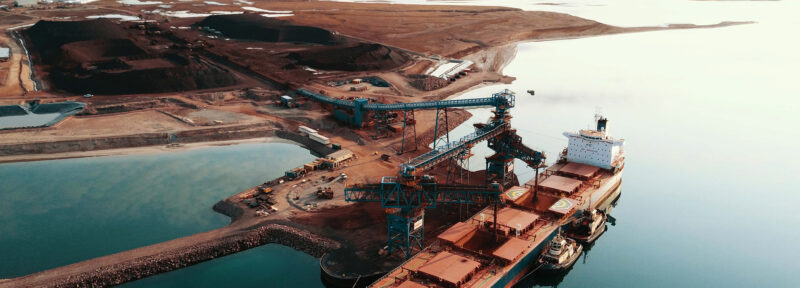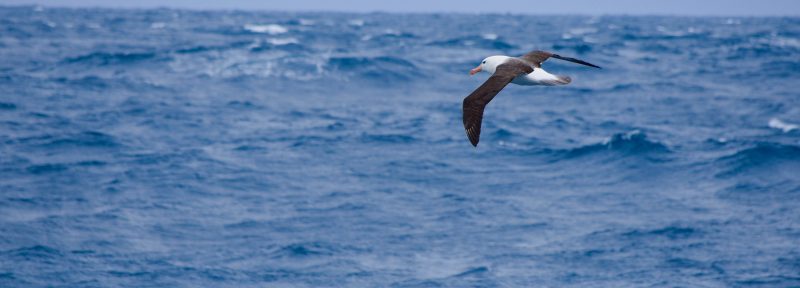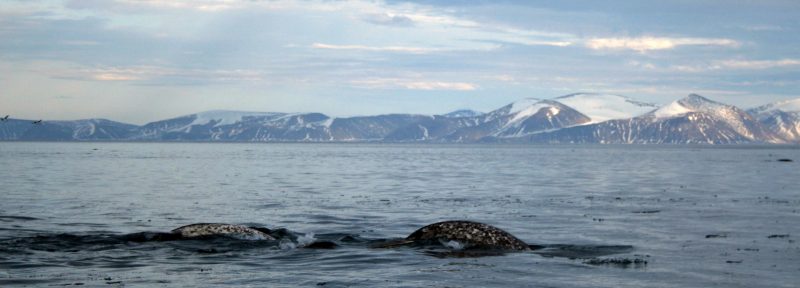Report Finds Dramatic Increase in Shipping Noise from Mary River Mine at Levels Known to Disturb Narwhal
A bulk carrier docked at Mary River Mine's port at Milne Inlet on north Baffin Island.
Crédit : Oceans North/Build Films
A new acoustic monitoring report documents a substantial increase in underwater noise as a result of ships traveling from Baffinland’s Mary River iron ore mine through Eclipse Sound. This ship noise occurs at levels known to disturb narwhal and other marine mammals and may interfere with their communication.
The report found that the number of one-way, mine-related ship transits through the nearby Milne Inlet increased almost 600% between 2015 and 2019. Each trip generated noise for minutes to hours at levels above those of the natural soundscape. Underwater noise may interfere with communication of narwhal, ringed seals, and bowhead whales, and can disrupt other behaviours, like diving and movements in groups on the sea surface.
Shipping-related noise is expected to increase dramatically if Baffinland Iron Mines Corporation wins approval this year to double its ore production at Mary River from six million tonnes annually to at least 12 million tonnes.
“The report’s findings raise serious concerns about the impact large iron ore carriers and other ships are having on narwhal and other marine mammals that rely on this rich marine habitat,” said Chris Debicki, vice-president of policy for Oceans North. “Allowing the mine to expand production in the absence of more research puts these important populations of marine mammals at risk.”
A small pod of narwhal.
Crédit : Oceans North/Build Films
Oceans North filed the report during the Nunavut Impact Review Board hearings earlier this month. The report by Dr. Joshua Jones, a Biological Oceanographer at the Scripps Institution of Oceanography, is based on acoustic monitoring data collected between 2015-2019 in partnership with Oceans North and hunters from Pond Inlet. One underwater sound recorder is located in Milne Inlet, and a second one listens from east of Pond Inlet.
The report noted that in 2015, there were 42 one-way transits of ships through Milne Inlet, 40 of them related to the mine. By 2019, that number had jumped to 245 ship transits, all but two from the mine.
Using data collected from the acoustic devices, the report measured noise levels from four types of commercial ships: bulk carrier, general cargo, fuel and chemical tankers and an icebreaker. The tankers and ice breaker generated the loudest noise levels, followed by the bulk carriers.
Narwhal rely on pulsed and whistle calls, while ringed seals bark, growl, and yelp. The report estimated that during quiet conditions, the noise from bulk carriers could reduce the “listening space” – or area in which animals can hear each other– for narwhal and ringed seals by 50% or more, even when they are up to 20 kilometers from the ships. At less than five kilometers, the masking of sounds can be over 90%. Further research is underway to investigate potential communication interference caused by Eclipse Sound shipping noise.
A bulk carrier anchored off Pond Inlet.
Crédit : Oceans North/Build Films
If the mine is granted permission to double its production, the company may switch to Capesize ore carriers that are substantially larger than the bulk carriers currently in use. These bigger ships generate higher underwater sound levels that are predicted to have an even greater impact on underwater soundscapes.
The report noted that cumulative and long-term effects of daily, noise-related disturbances on narwhal and other marine mammals is not yet known and further research is needed. But scientific evidence across the globe is now documenting the negative effects of man-made noise on marine wildlife.
Read the full Scripps report in our Resources section, as well as a summary of its findings in Inuktitut and English.
Ruth Teichroeb is communications director for Oceans North.

